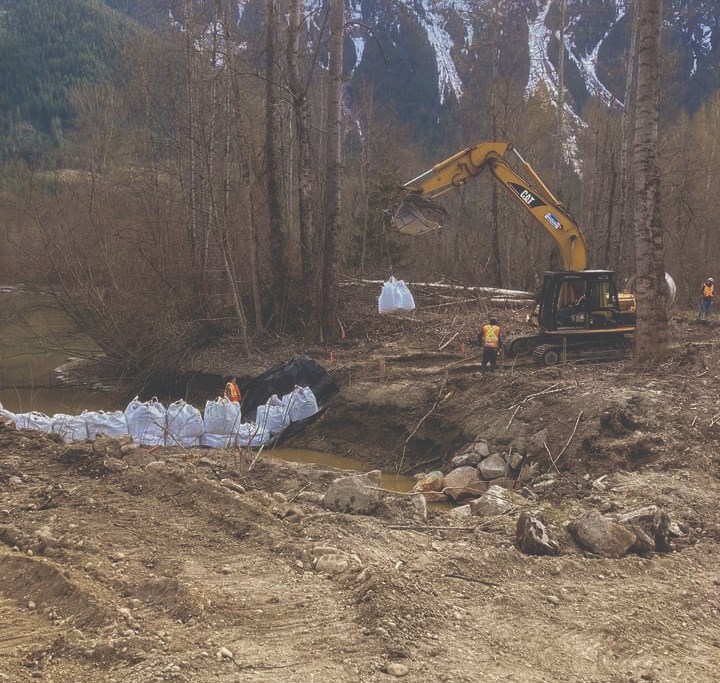On July 14, the Pemberton Valley Dyking District (PVDD) held its 75th annual general meeting.
Twenty members of the public heard from PVDD emergency manager Kevin Clark, who explained some of the projects that the diking district has undertaken over the last year, as well as what the future of the diking district looks like going forward.
The Pemberton Valley Dyking District formed as an improvement district in 1947 following a massive flood in 1940 that wreaked havoc on the Pemberton Valley.
Following the flood, the federal government commissioned the large-scale Pemberton Valley Reclamation Project in which dykes were constructed, meanders straightened, rip rap bank protection installed, and Lillooet Lake was lowered.
The PVDD now manages 44 kilometres of dikes, 25 km of drainage ditches, 30+ culverts and flap gates and 16 km of bank armouring in the valley, as well as sediment management on all major rivers and creeks in the area.
Looking ahead, the very future of the diking district is unclear, as the province has slowly been shifting the responsibilities of the improvement districts to municipal governments and regional districts, with the long-term goal to eliminate them.
“The Ministry of Municipal Affairs is the governing body of the diking district, and since 2006, they've been trying to get rid of the improvement district," said Clark.
"Their fix is for the diking district to join the [Squamish-Lillooet] Regional District. {But] the regional district does not want us, the Village of Pemberton does not want us, Lil'wat does not want us,” he added.
“They've all signed a letter, and we've presented it to the minister saying that we believe that the way it functions is the best. The diking district isn't a local government so we can work as the negotiator or the go-between all the people."
The diking district would like to expand capacity by adding a full-time field operations person to the team to help manage the overloaded workflow.
With additional staff, the district could focus more time on getting rights of way to properties for maintenance, agricultural drainage, public education, and the Emergency Management Committee meetings that the Diking District chairs.
Clark noted that every time a new land owner takes possession of a property with diking infrastructure, the district has to inform the new owners of the flood management system and ensure that the owners don’t do anything to the system that could damage other properties.
“We have a lot of landowner turnover, so if a property gets sold and it has a diking district ditch or dyke or floodgate on it, I have to go to the new landowner as soon as they take possession and talk to them, introduce myself, and explain to them that this ditch is very important. If you do something in this ditch, then all those farms up there can't farm, so before you do anything, talk to me, and it just takes a ton of time,” Clark said.
Finance-wise, the PVDD's income was up compared to 2020. Taxation brought in $1,001,819 in 2021 compared to $857,578 in 2020, while government transfers increased from $687,005 in 2020 to $1,457,382. In total, including interest and sale of assets, the district brought in $2,638,825 in revenue.
The government funding increase was for the Arn Canal Outlet upgrade, the Flood Mitigation Funding Stream projects and the Lillooet Sediment Removal Project, which the provincial government funded through the Squamish-Lillooet Regional District and the Village of Pemberton.
The Dyking Tax is paid by residents of the Pemberton Valley in the village and SLRD. The rate is set at $.57 per $1,000 of assessed property value for residential properties and $1.40 per $1,000 for commercial properties.
While revenues were up in 2021, the cost of maintaining diking infrastructure has become increasingly expensive with rising inflation costs. The district spent $2,065,465 on dike maintenance and another $245,140 on administration resulting in total expenses of $2,354,303.
If you would like to learn more about the diking district you can find more information at www.pvdd.ca/




